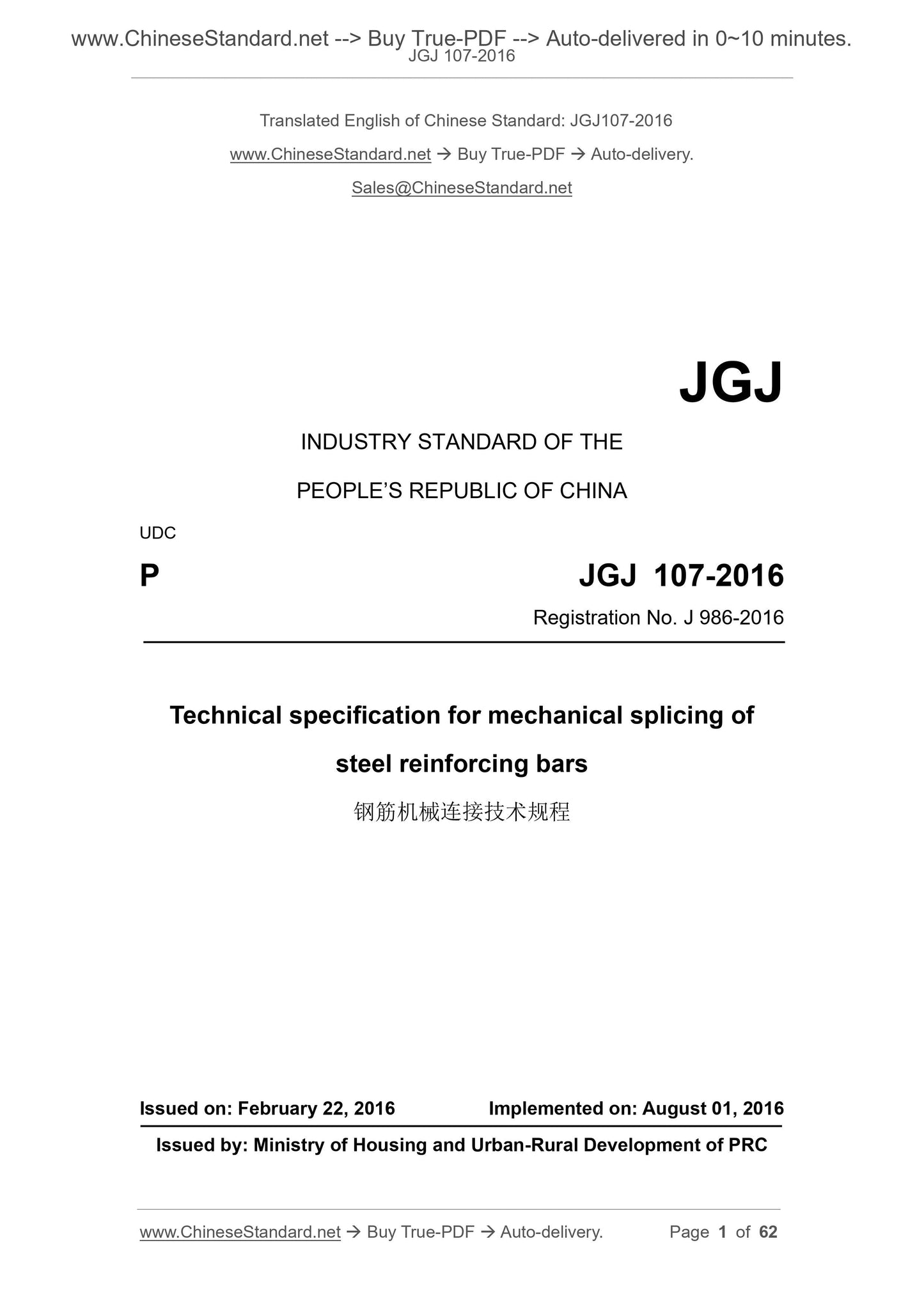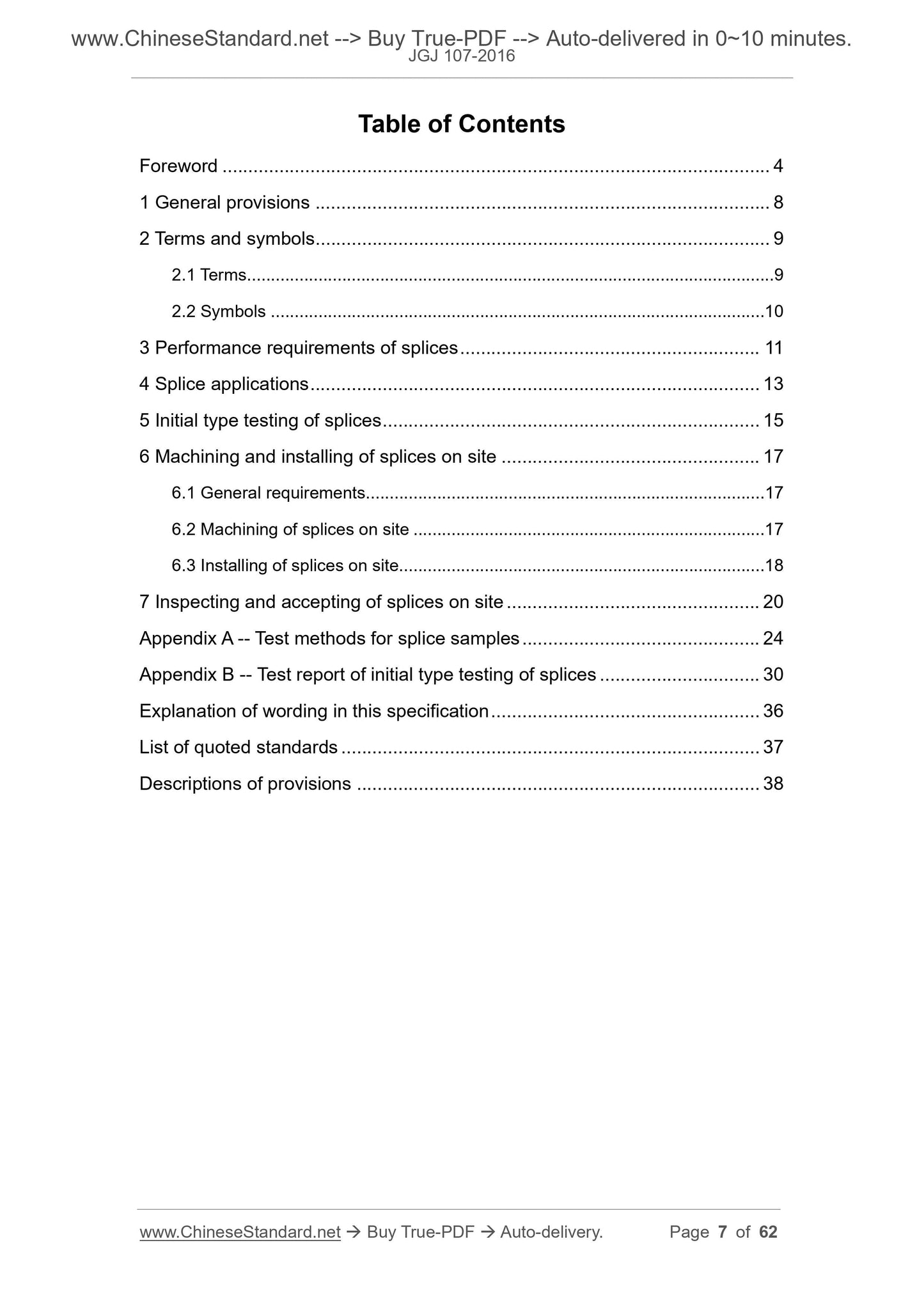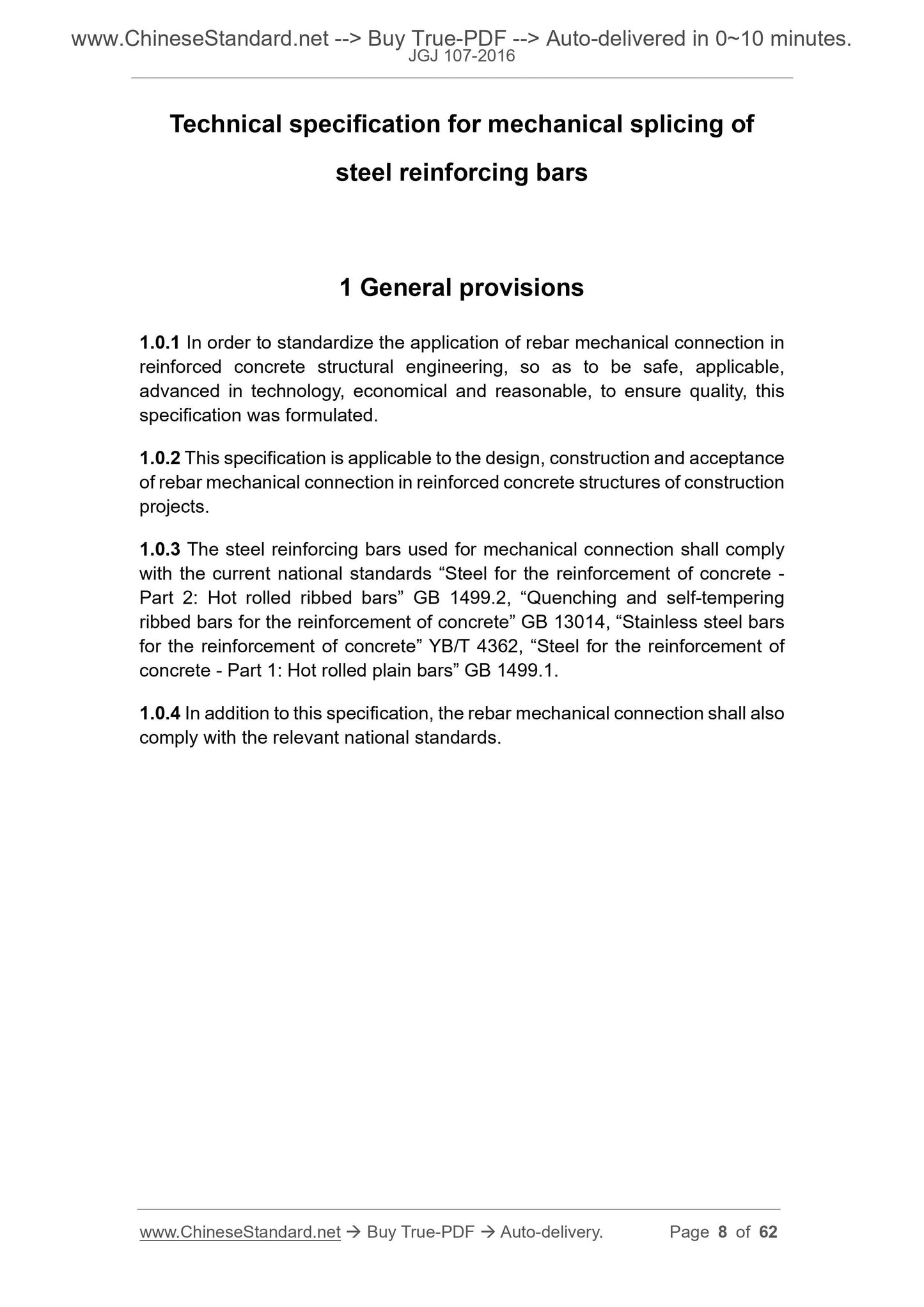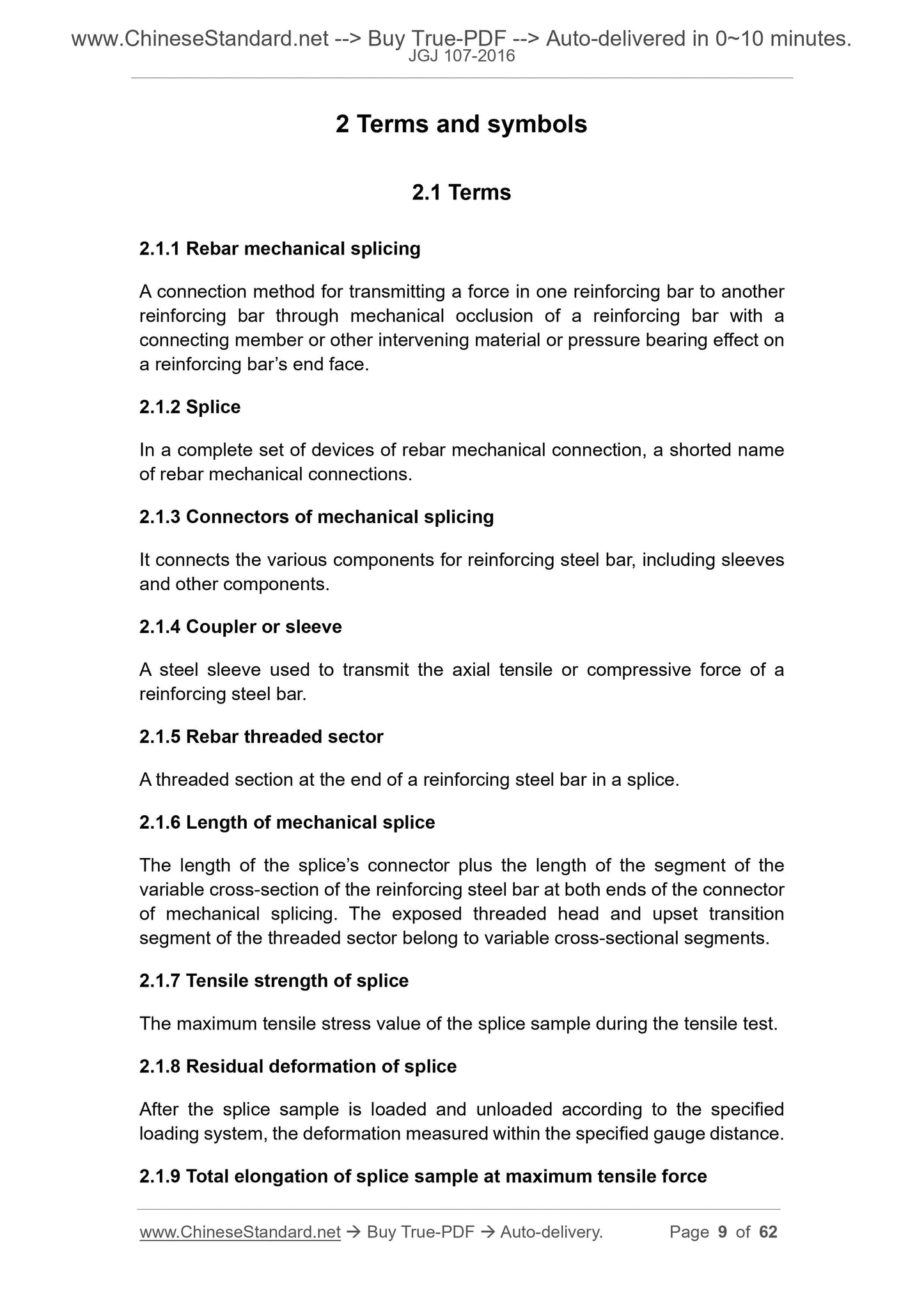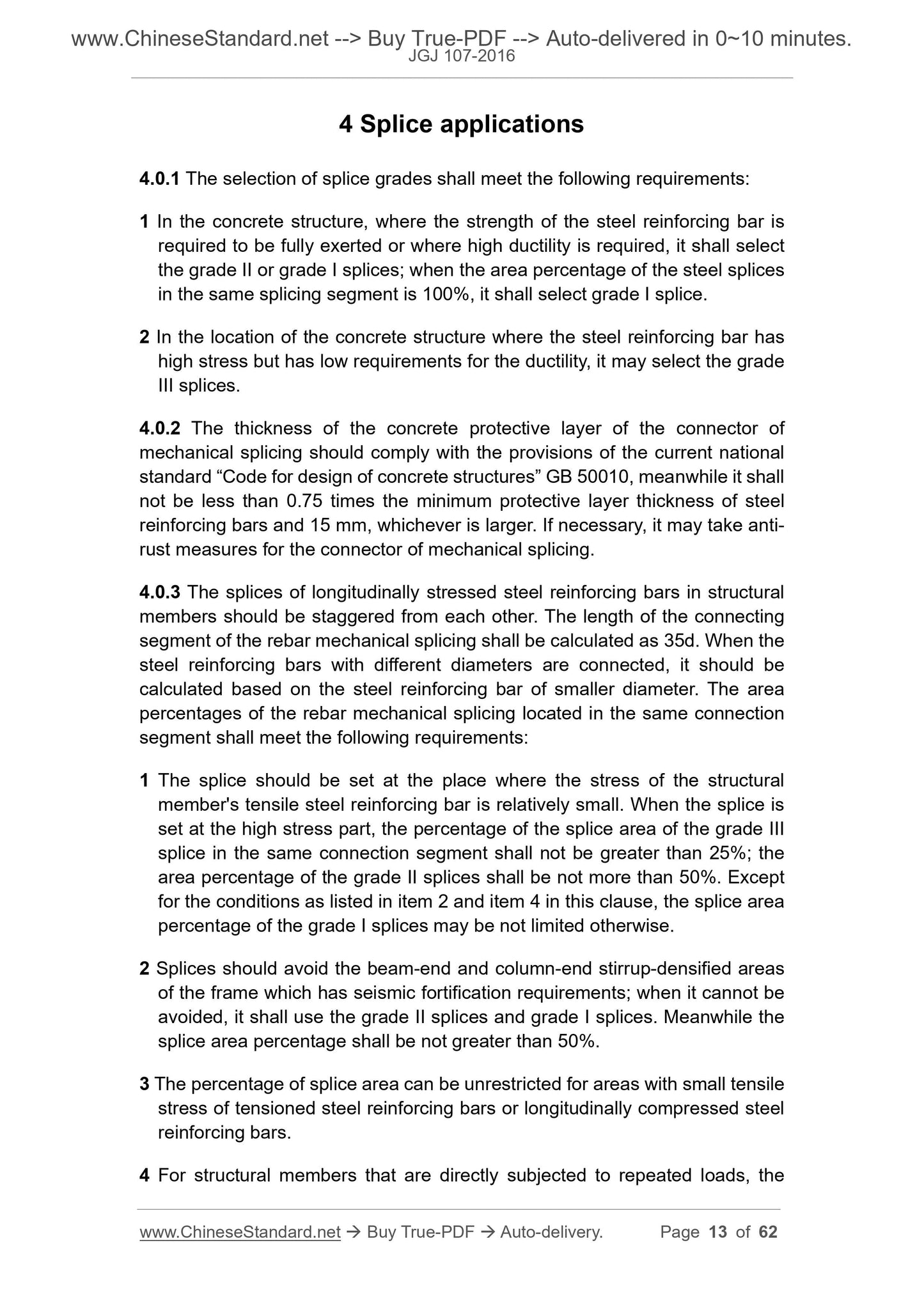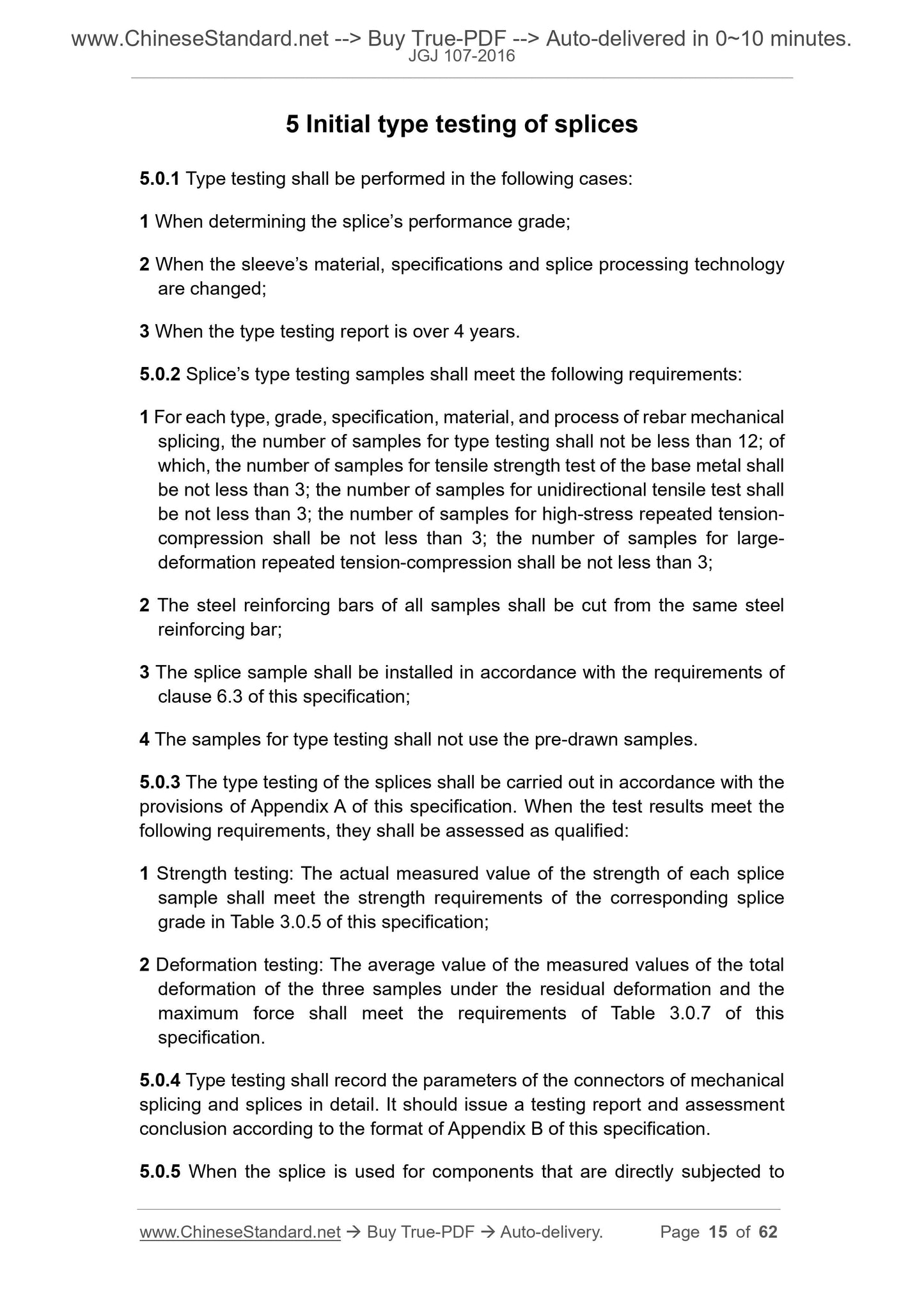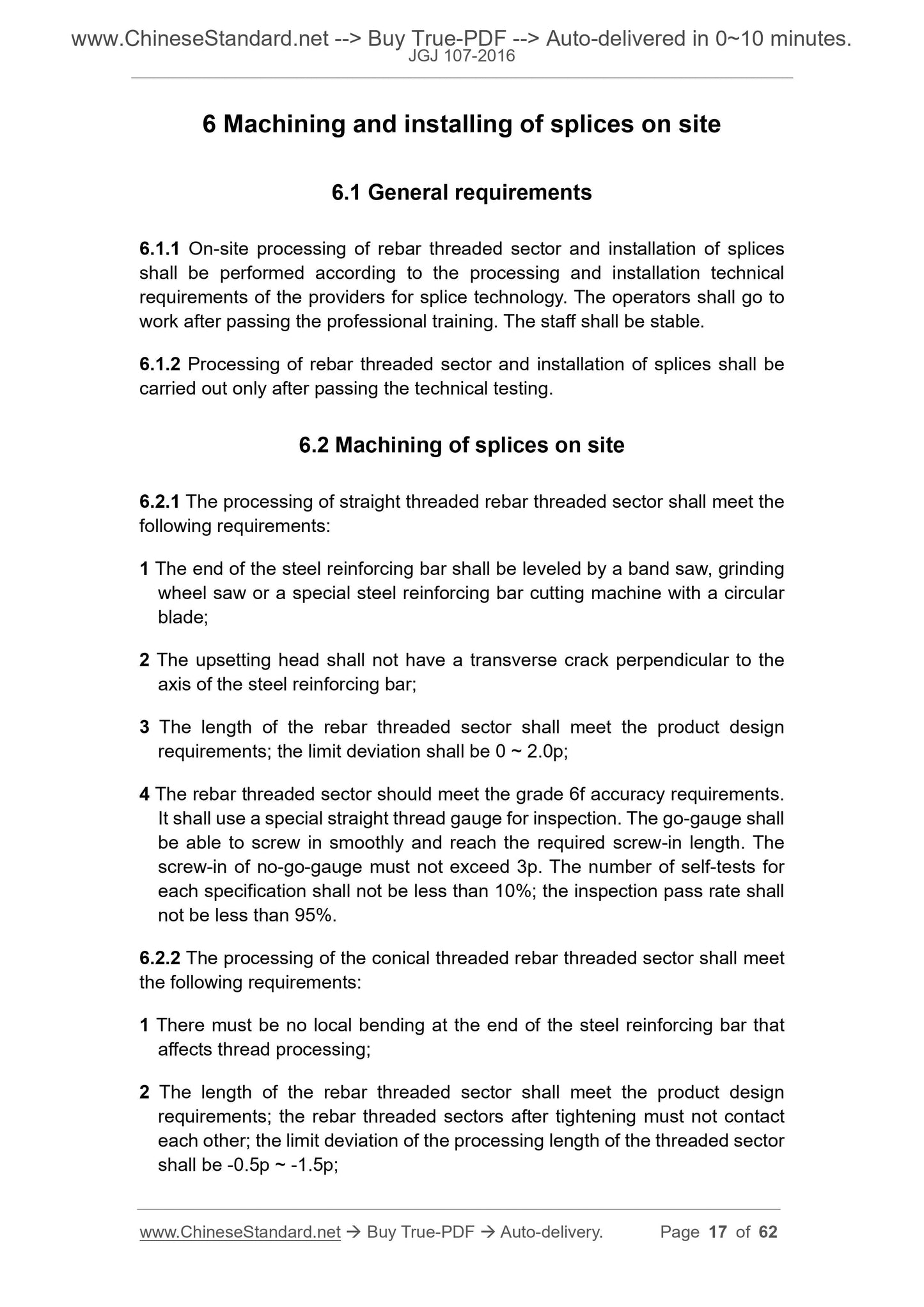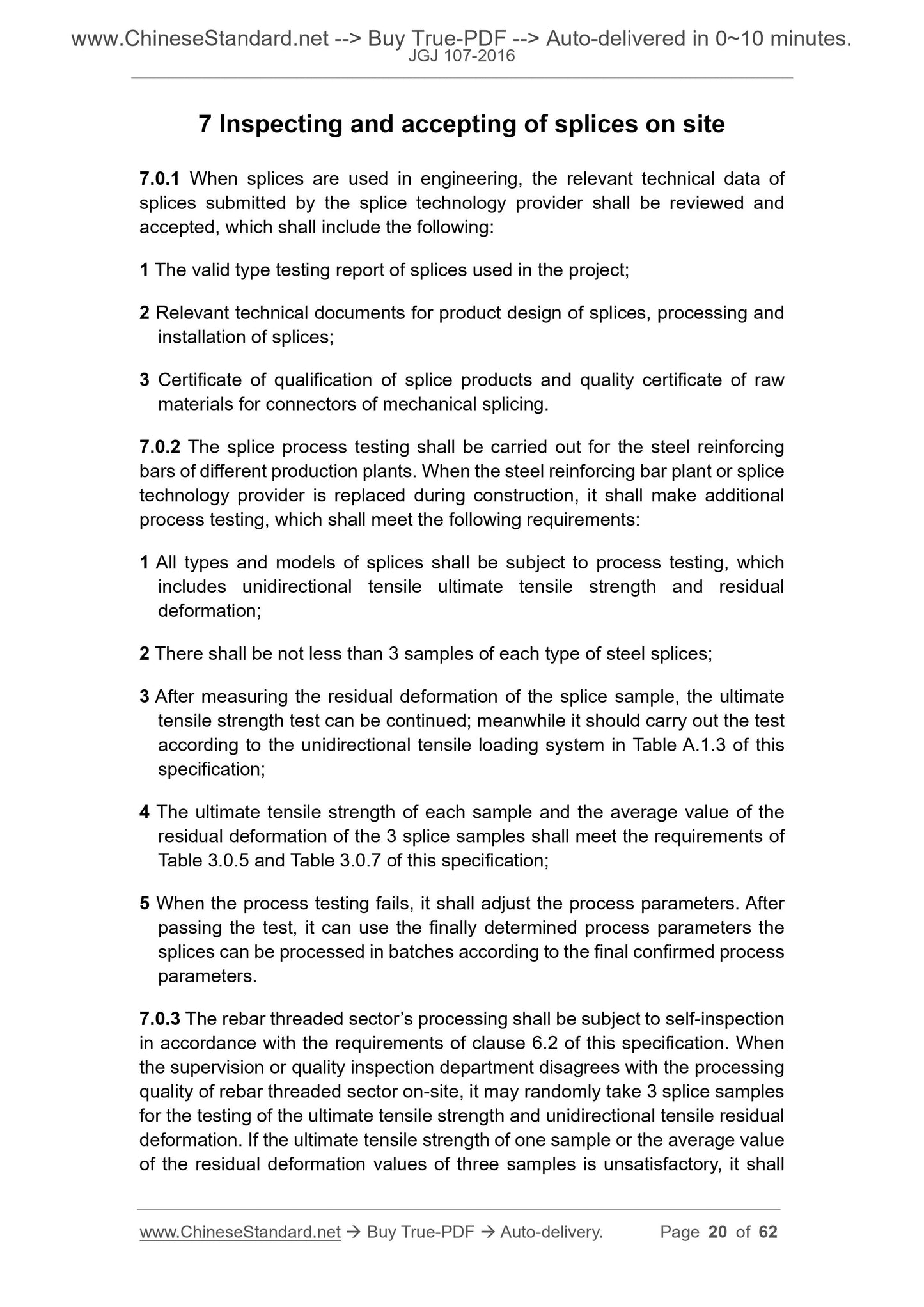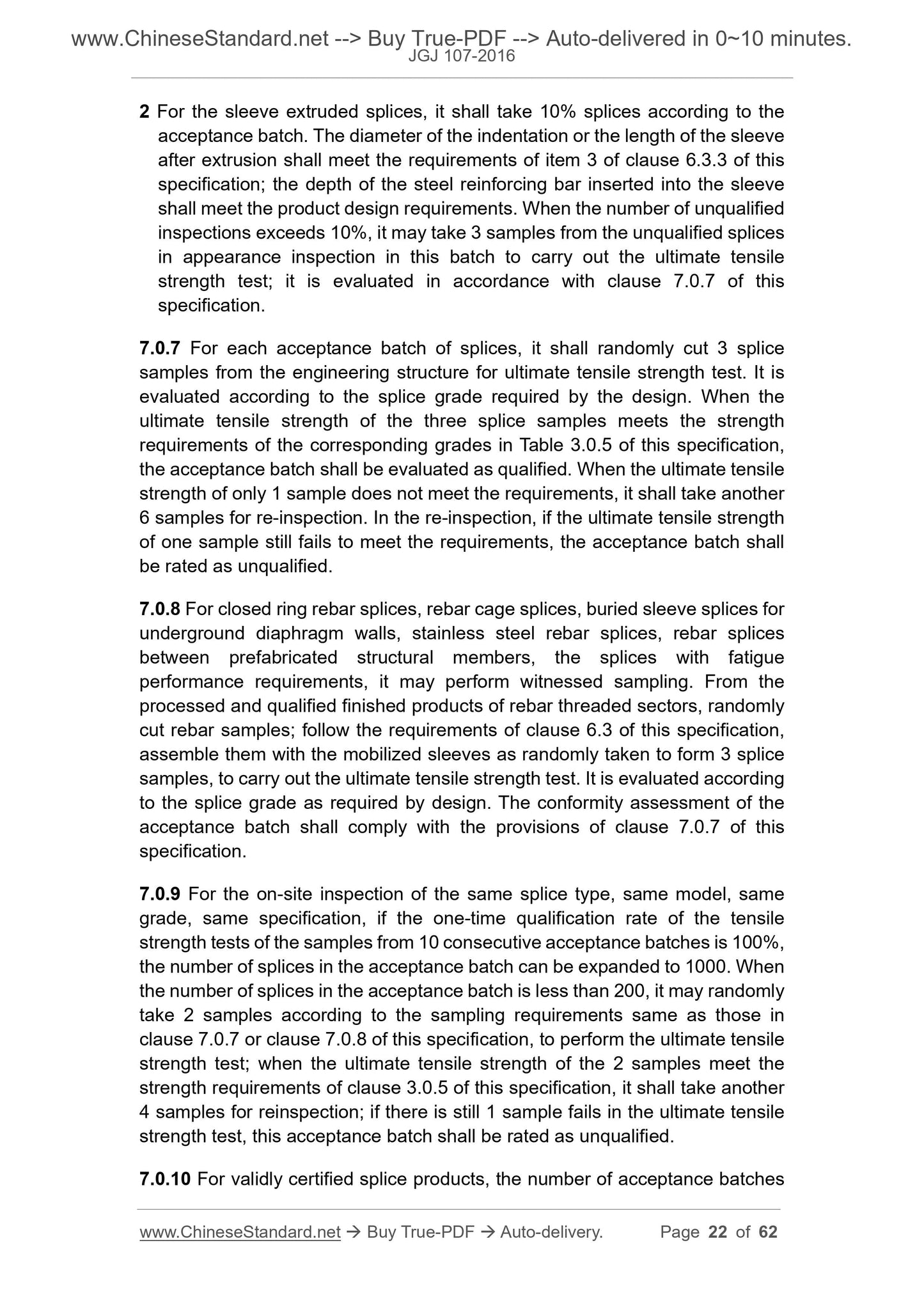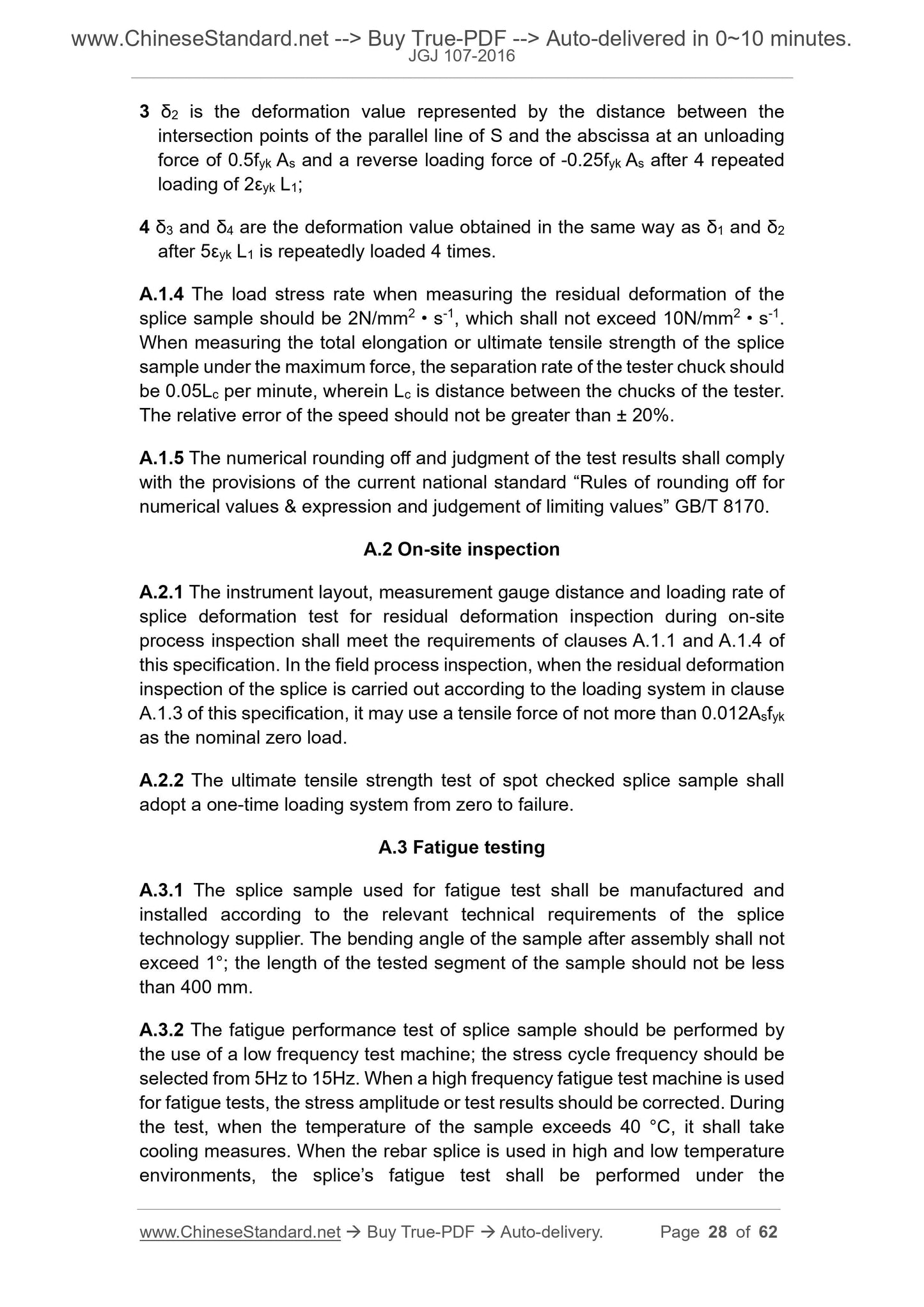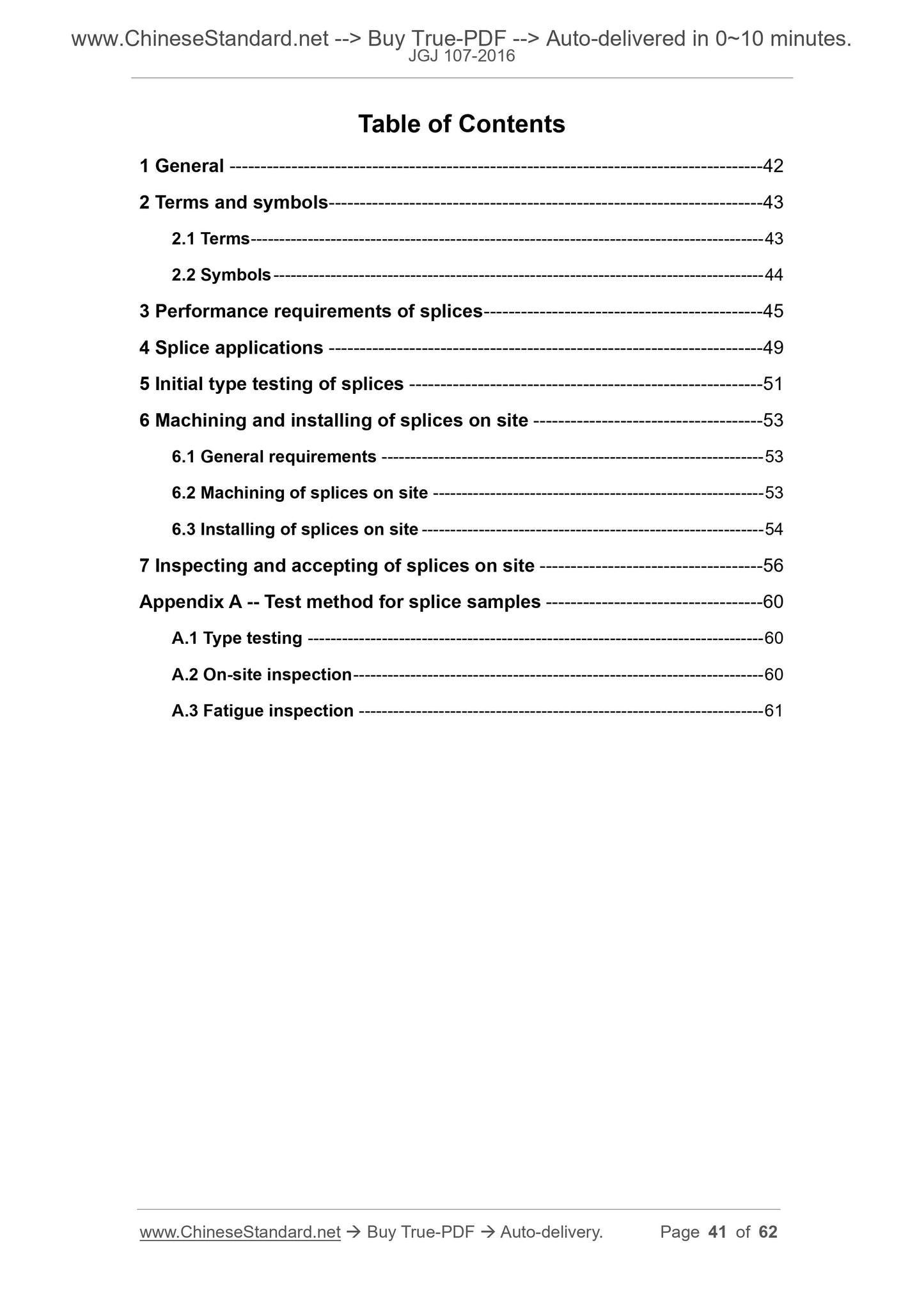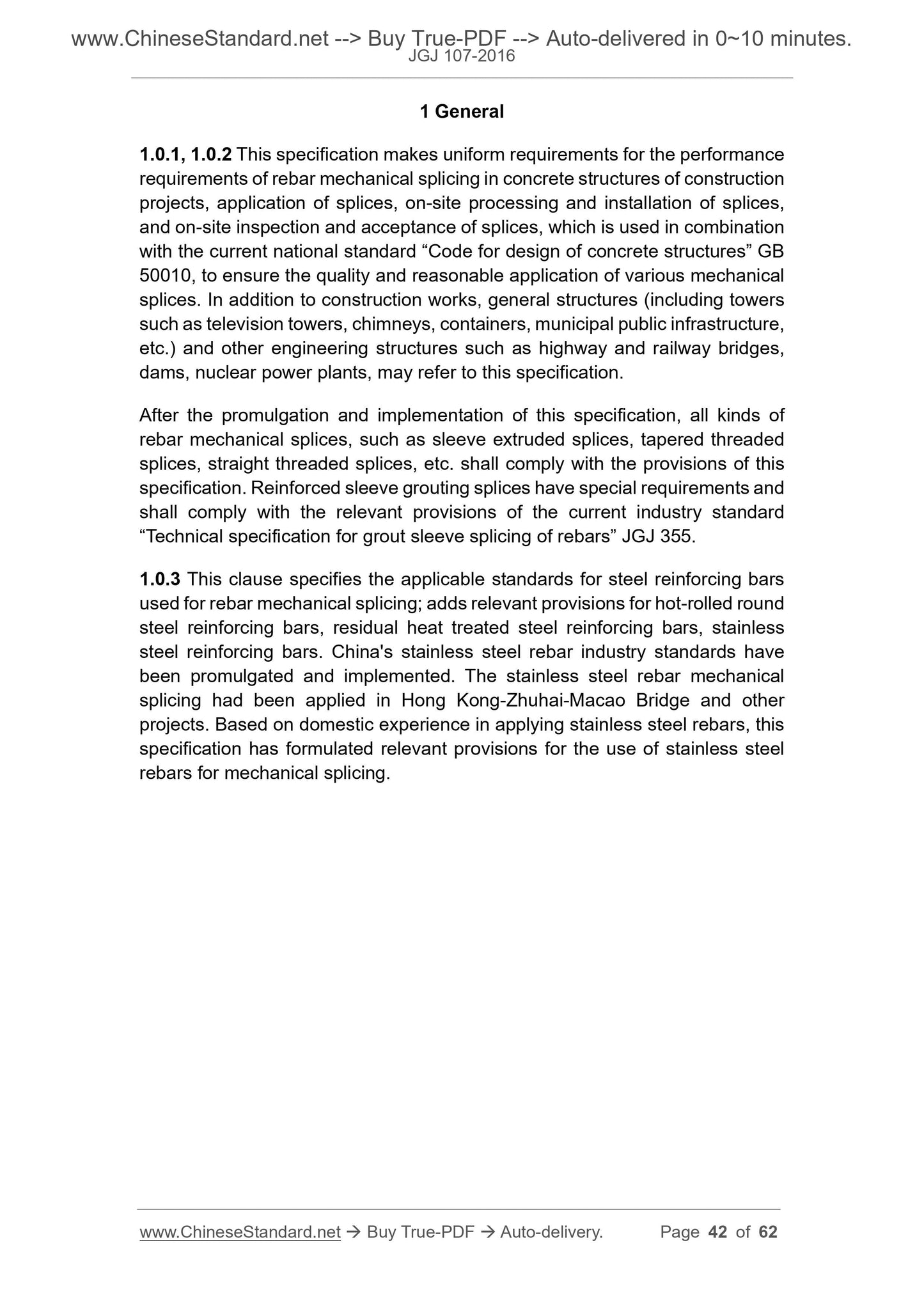1
/
of
12
www.ChineseStandard.us -- Field Test Asia Pte. Ltd.
JGJ 107-2016 English PDF
JGJ 107-2016 English PDF
Regular price
$315.00
Regular price
Sale price
$315.00
Unit price
/
per
Shipping calculated at checkout.
Couldn't load pickup availability
JGJ 107-2016: Technical specification for mechanical splicing of steel reinforcing bars
Delivery: 9 seconds. Download (and Email) true-PDF + Invoice.Get Quotation: Click JGJ 107-2016 (Self-service in 1-minute)
Newer / historical versions: JGJ 107-2016
Preview True-PDF
Scope
1.0.1 In order to standardize the application of rebar mechanical connection inreinforced concrete structural engineering, so as to be safe, applicable,
advanced in technology, economical and reasonable, to ensure quality, this
specification was formulated.
1.0.2 This specification is applicable to the design, construction and acceptance
of rebar mechanical connection in reinforced concrete structures of construction
projects.
1.0.3 The steel reinforcing bars used for mechanical connection shall comply
with the current national standards ��Steel for the reinforcement of concrete -
Part 2.Hot rolled ribbed bars�� GB 1499.2, ��Quenching and self-tempering
ribbed bars for the reinforcement of concrete�� GB 13014, ��Stainless steel bars
for the reinforcement of concrete�� YB/T 4362, ��Steel for the reinforcement of
concrete - Part 1.Hot rolled plain bars�� GB 1499.1.
1.0.4 In addition to this specification, the rebar mechanical connection shall also
comply with the relevant national standards.
Basic Data
| Standard ID | JGJ 107-2016 (JGJ107-2016) |
| Description (Translated English) | Technical specification for mechanical splicing of steel reinforcing bars |
| Sector / Industry | Building and Construction Industry Standard |
| Classification of Chinese Standard | P25 |
| Classification of International Standard | 91.080.40 |
| Word Count Estimation | 63,697 |
| Date of Issue | 2016-02-22 |
| Date of Implementation | 2016-08-01 |
| Older Standard (superseded by this standard) | JGJ 107-2010 |
| Quoted Standard | GB 50010; GB/T 1220; GB 1499.1; GB 1499.2; GB/T 3075; GB/T 8170; GB 13014; GB/T 14975; JGJ 355; JG/T 163; YB/T 4362 |
| Regulation (derived from) | Ministry of Housing and Urban - Rural Development Notice No.1049 of 2016 |
| Issuing agency(ies) | Ministry of Housing and Urban-Rural Development of the People's Republic of China |
| Summary | This standard is applicable to the design, construction and acceptance of steel mechanical connections in concrete structures. |
Share
